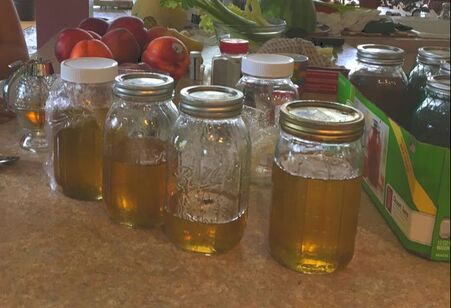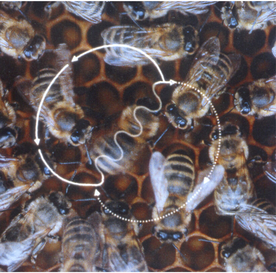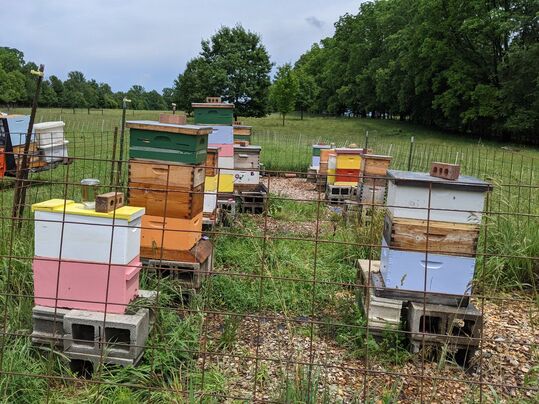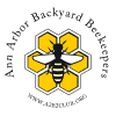 Amazing Honey has many amazing properties. At the proper water content, honey that has been properly stored will never expire or go bad. In fact, honey that has been recovered from Egyptian tombs and is over 2,000 years old is still edible. One of the reasons for this longevity is that honey is antimicrobial, meaning that organisms such as bacteria and fungi do not live and grow in honey (the one exception to this is botulism spores). Three factors that make honey antimicrobial are 1) the fact that it is slightly acidic, 2) that it is a supersaturated solution, and 3) that it contains compounds such as hydrogen peroxide. Honey has been used for thousands of years medicinally to aid in wound and burn healing. Blend Bees make honey during the spring, summer, and fall, but typically only consume it during the winter and early spring, preferring to consume fresh nectar and pollen in the form of bee bread (pollen mixed with nectar or honey) during the honey flow. Honey can be thought of as nectar that has been processed for long term storage. Unlike when bees store the pollen from multiple species of flowers in the same cell, bees only store nectar from the same species of flower in the same cell. Also, honey bees typically store all the nectar obtained from a single floral source in the same area of the hive or same frame. This results in different colors of honey depending on the floral source and different varieties of honey (ex. clover honey vs orange blossom honey). Crop Though I think it’s funny to think of honey as bee vomit, honey is actually the substance produced by bees when regurgitated nectar from their crop (or honey stomach) is exposed to the enzyme invertase produced by the bee’s salivary gland which converts the sugar sucrose from nectar into glucose and fructose. The liquid honey which is now made up of glucose and fructose is stored in the wax cells of the hive and dehydrated by the bees until its water content is at or below 18.6%, at which point the wax cells are capped. More Information: https://honey.com/about-honey/how-honey-is-made
0 Comments
 Angle When a forager returns from an abundant food source, she will regurgitate some of the nectar and pass it on to other foragers on the dance floor. Straight up is always the position of the sun on the dance floor, so if she then performs her waggle dance at an angle 60 degrees to the right of straight up, other foragers know that they will have to fly 60 degrees to the right of the position of the sun to find the nectar source. Since bees can see polarized light, they can still use the sun’s position for direction even on a cloudy day. Boogie There is a dance floor in every honey bee hive. It is located on the surface of the wax comb near the entrance of the hive. Foragers who have found a good source of nectar will perform a series of motions (dance) here to tell other foragers where to find this nectar source. Honey bees are one of the only animals other than humans who are able to tell another member of their species where something is without having to show it to them. Convey The waggle dance tells other bees not only how far away the food source is, but also in what direction. Distance is roughly determined by the duration of the dance. A longer dance indicates a greater distance from the hive. The direction another bee must fly to reach the nectar source is determined by the angle the bee dances relative to the position of the sun. More Information: https://bee-health.extension.org/dance-language-of-the-honey-bee/ |
AuthorJen Haeger is a new master beekeeper and board member of A2B2. Archives
August 2022
Categories
All
|


 RSS Feed
RSS Feed
